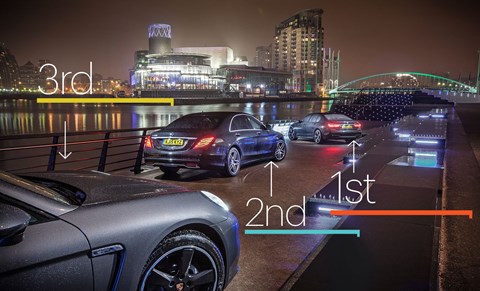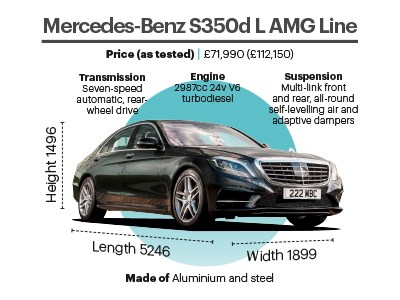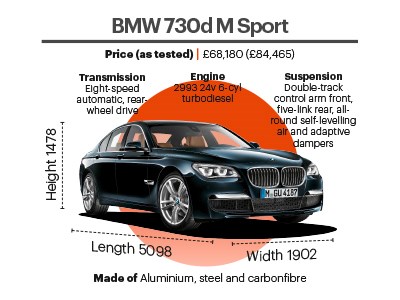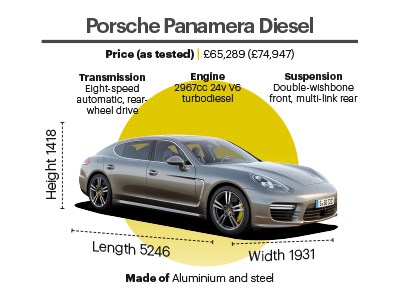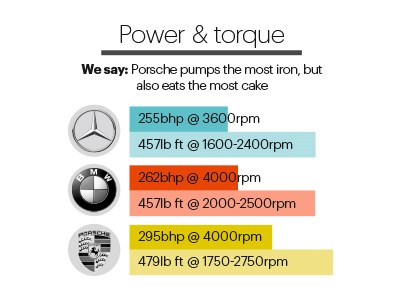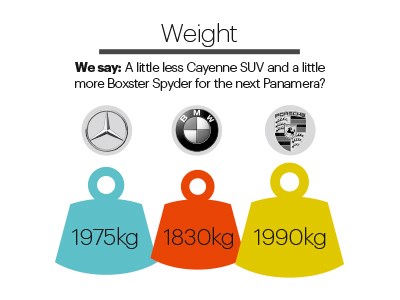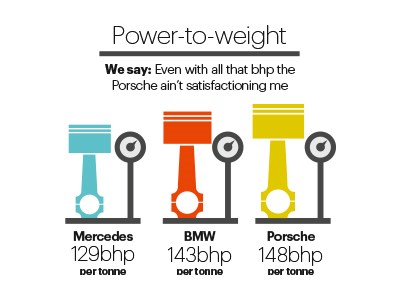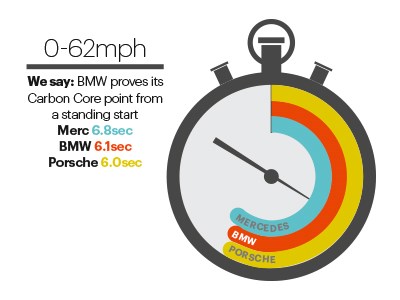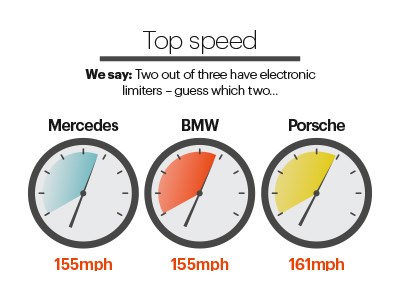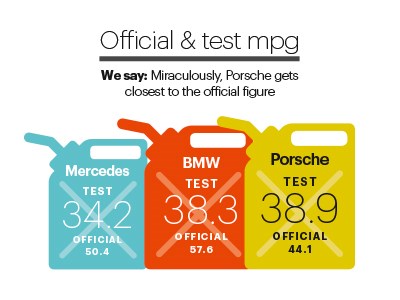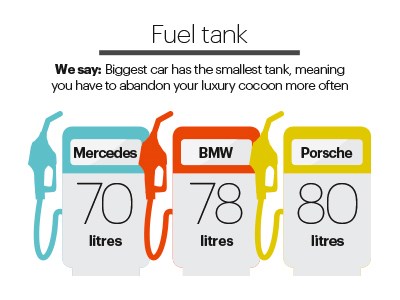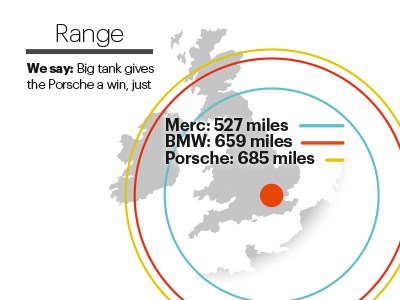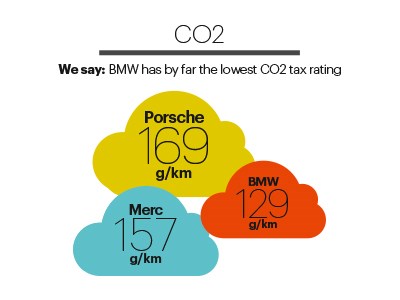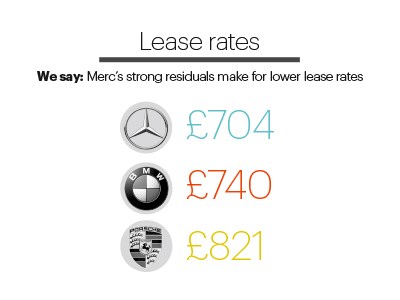► The new BMW 7-series toughtest test yet
► Triple test vs Porsche Panamera vs Merc S-class
► Is there a new best seat in the house?
Your relationship with the new 7-series starts with the key, and may even be defined by it. Not for BMW’s new flagship anything so mundane as a conventional plipper or – heaven forbid – a piece of metal. Instead you’re presented with a technological totem, similar in size and appearance to an especially expensive portable computer mouse. Once extricated from its (suitably branded) leather sheath, this is sleek and cool to the touch, if initially puzzling for its palm-filling size. Then you find the button that activates the hidden screen, revealing that this isn’t just a car key, this is something new.
Touch-sensitive and full colour, the Display Key allows you to check the doors and windows, whether the lights are on, the remaining fuel range and even the servicing schedule right down to individual consumables. Know when you’ll next need to use the car? Then pre-set the climate control. If your pulse is already quickening at the thought of this modernity, then the news that you’ll occasionally have to remember to dig out a USB cable and recharge the bugger won’t be a major concern. But if you’re already blanching at the inconvenience of this additional chore and the key’s dimensions (flawless keyless entry and go makes it easy to ensconce in a pocket, at the risk of ruining the line of your suit), or even the sheer attention-seeking gimmickry in evidence, then it’s possible the 7-series won’t be for you. For this is a car that unashamedly strives for cutting edge.
That technology is an increasingly important signifier of luxury and prestige is an axiom that can probably be confirmed by a glance around your immediate surroundings. And that key is no red herring: the new 7-series is a high-tech car, from its innovative use of ‘industrially produced’ carbonfibre components to its active suspension trickery and the way you can interact with the infotainment. The question is whether BMW’s approach is enough to usurp the current and undisputed king of corporate limos, the Mercedes-Benz S-class.
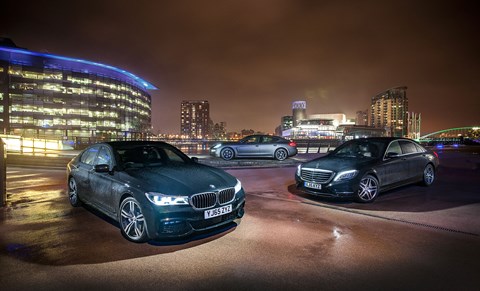
To find out, we’ve matched the 730d M Sport against the S350d AMG Line – best-selling 3.0-litre, six-cylinder turbodiesel engines both, dressed up in glory-borrowing trim levels named for their respective marques’ performance divisions. This £68,180 (before options) 262bhp 7-series is a short-wheelbase car, as is traditionally most popular amongst BMW buyers, while the £71,990 (ditto) 255bhp S-class is in fully luxe long-wheelbase specification, Mercedes’ primary development focus rather than the derivative in this latest generation. These differing endowments might seem incongruous, but we hope they’ll play to each car’s strengths – BMW maintaining its usual promise of increased driver appeal.
To this end we’ve also lined up Porsche’s 295bhp Panamera Diesel. The most powerful car here as well as the cheapest (£65,289 before options), the Porsche badge offers buyers in this sector a different kind of imageand prestige, and should prove a fine sounding board for the BMW’s sporting credentials. Last updated in 2013 – the same year that the S-class was released – it isn’t any newer than Audi’s A8, but it is more interesting (and if you want a refresher on the Ingolstadt barge, check out the swansong S8 Plus tested on p40). The Porsche too is powered by a 3.0-litre turbodiesel six-pot. All are rear-wheel-drive automatics, naturally.
Confronted with the three of them on a dark Manchester night, surrounded by the culturally savvy neon of Media City and the Quays, the Mercedes undoubtedly has the most executive visual impact. The length helps, but the curves and edges of the entire design strike a well-judged balance between elegance and that intangible reek of money, though the 19-inch AMG alloys arguably push things a step or two in the wrong direction. By contrast the 7-series is a bit too easy to mistake for a 5-series. This might be the largest series production BMW ever but the proportions – perhaps in part because of the perspective-distorting 20s and dechromification of the M Sport model – aren’t different enough to make it stand out as a range-topper in the way previous 7s have distinguished themselves. If you favour Phaeton-style anonymity over flagrant wealth-waving, this might be a positive.
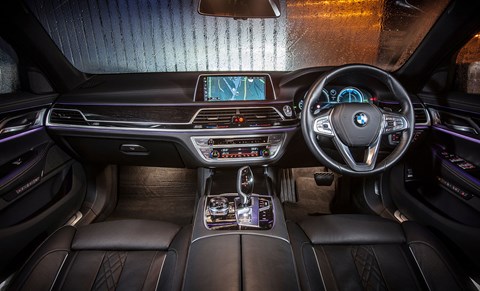
The Panamera is something different again, low-slung over optional 20-inch ‘Sport Classic’ (remember the limited edition 997 911?) alloys, in this light it looks slippery, almost furtive, a getaway vehicle for those leaving via the back door rather than entering at the front gate. And much as we’re used to the beetle-backed appearance now, it will never be graceful or pretty.
Those big rims and generous hips hint a different sense of purpose, though. It’s difficult to separate the Porsche’s interior accommodation from its driving experience, so decidedly does your preference for one dictate your reaction to the other. It’s from behind the steering wheel that the Panamera makes most sense – and not only because you can’t see its gigantic arse from that vantage point. While the S-class surprises with the level of involvement Mercedes’ engineers have allowed to filter through to the driver – Parker certainly won’t find his need for nuance entirely neglected – the Panamera immediately pulls you right into the action via your clutching hands. As with all Porsches, it has a particular texture to its responses that’s distinct from any rival, a self-confident conviction that it owns the road rather than the other way around, reminding you at every turn that this car’s dynamics have been fastidiously honed.
The flip side to this is an aggravating grumble under application of low-speed steering lock; maybe it’s the tyres scrubbing, but it sounds and feels like an overly tight diff (of course Porsche fits an LSD as standard…), and erodes any impression of premium-class serenity as soon you twist the helm to pull away from the kerb. Your passengers will be unnerved, regardless of how much fun you know you’ll be having once you’re out of the city and onto the open road. Putting the meat-sack baggage to one side, that’s an itch the S-class will never quite be able to scratch. But the BMW? It might get close.
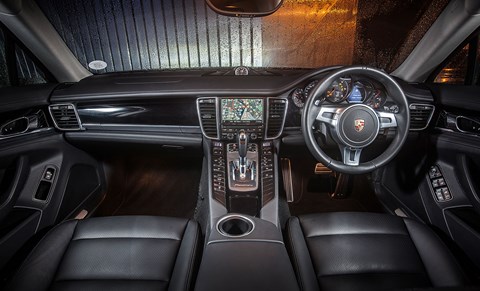
Much as those 5-series proportions make it look deceptively compact, the 730d pulls off the remarkable feat of genuinely feeling much smaller to drive than it really is – a height that not even the Porsche, for all its involvement, quite reaches. The illusion is shattered as soon as you begin to negotiate a car park, but on the move, cutting and thrusting, the BMW is as nimble as a tech start-up, capable of the deft responses that established giants cannot contemplate. This is essentially irrespective of the chosen driving mode, though Sport does sharpen the palate. Be aware that one of the secrets to this success is a £2450 option, however. Executive Drive Pro adds electro-mechanical active anti-roll bars to the BMW’s standard air springs and adaptive damping, smothering roll to an even greater extent than the weight reduction achieved via the new car’s Carbon Core construction. The experience would be more impressive still if only the fat-rimmed steering wheel didn’t deaden quite so much intimacy. But if the Porsche plugs you into the process with greater clarity, the BMW’s sonorous medium between the composed and the ecstatic deserves applause.
The Carbon Core and the active anti-roll surely also contribute to the all-important ride quality. Leap from the BMW to the equally air sprung and adaptively-damped Mercedes and your snap reaction is that the S-class is cushier, gliding where the 7-series might (ever so gently) patter, utterly unfazed by drizzle-slicked Mancunian cobbles – and this is without the Merc’s camera-calibrated Magic Body Control party piece in this instance. But then suddenly you’ll strike a sunken drain cover, and it’s as if the S-class has a momentary lapse of concentration, the shock jarring the interior calm with a twang. Cross the same imperfection in the BMW and it warrants little more than a soft thunk. Whether this is due to greater damping refinement, the fibre-enhanced strength of its lighter structure or Executive Drive Pro’s ability to disengage the anti-roll bars to reduce suspension disruption, the result is assured, convincing and properly premium.
The Porsche is unique in this company for being fitted with steel springs and passive dampers as standard. Both can be upgraded at extra cost, and this car does have £1116-worth of Porsche Active Suspension Management adaptive dampers – although I’m not sure you should bother, as another uniquely Porsche characteristic is that it’s actually more comfortable in the Sport and Sport Plus damper settings. In the standard mode it feels under-damped and over-sprung, almost belly-flopping between ride disturbances. Turn it up and the stiffer damping instantly clamps down on the excess movement, though the Porsche is by some margin the least relaxed car on the cobbles.
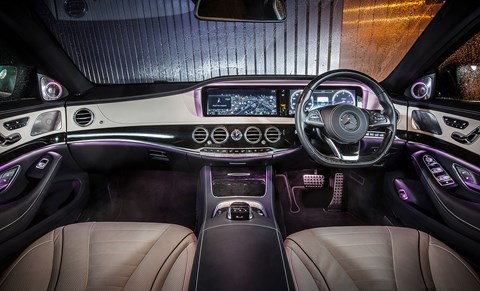
As the keenest owner-driver proposition you do find yourself wishing the Panamera was faster. On paper it is the quickest here, but it’s also the heaviest – yes, it weighs more even than the long-wheelbase S350d – and never quite takes your breath away. Weighing in at 160kg less, the 730d is 33bhp down but just 0.1sec slower to 62mph. For a bunch of diesels, all three sound pleasingly muscular when you work their engines. The Mercedes is the most pleasant of all, while simultaneously being the one least likely to derail your train of thought at motorway speeds. Not that refinement is troublesome elsewhere. Similarly, all three gearboxes are so accomplished there’s little to say. So the Mercedes has seven speeds to the others’ eight, but how often are you going to swap cogs yourself?
Having cut a dash visually and physically, we come to the crux of the matter: what these cars are like on the inside. Immediately, the Panamera is in trouble in this company. We can commend the clarity of function of all those buttons on the rising centre console (while noting the number of blank ones; as ever Porsche is concise with its standard kit), but compared to the others it’s like putting an arcade machine up against a cutting edge PC – or in the BMW’s case, Xbox Kinect. And in the rear this Panamera compounds the low-set and severely angled seatbacks with absolutely nothing in the way of passenger distractions. Your kids may even struggle to see out of the windows.
Porsche does offer rear-seat entertainment packages and power adjustable rear seating, but even so it’s hard to escape the impression that you’re a second-class occupant in the back of the Porsche, particularly when you consider the lengths BMW and Mercedes go to. For example, Mercedes offers no less than five different seating configurations in the rear of the extended S-class; this car combining the £5k individual rear seat package (electric reclining function, ‘luxury’ headrests, tables, temperature controlled cup holders), £3.5k comfort package (massage function, rear screens, Burmester surround sound) with an additional £1.5k reclining set-up that turns the seat behind the front passenger into a throne. Yes, that’s £10k on seats alone. Meanwhile the BMW’s Samsung Galaxy tablet, integrated into the centre console between its individual rear pews, gives you intuitive remote control of much of the 7’s in-car functionality.
Yet as with the outside, you might query whether the 7-series has enough eye-popping candy on the inside. Sure, that’s some intricate stitching on the seats and a lot of silvery surfacing, but compared to the dramatic sweep of the S-class’s interior with its dual widescreen displays and baroque detailing, the 7 is just another BMW, isn’t it? So what if some of the trim is hand-finished? The Mercedes may be a trifle gauche done up in black-and-white leather – select pink from the ambient lighting menu for the full hen-night stretch effect – but this is space that massages your ego as well as your weary, wage-slave-ruling body. You have arrived.
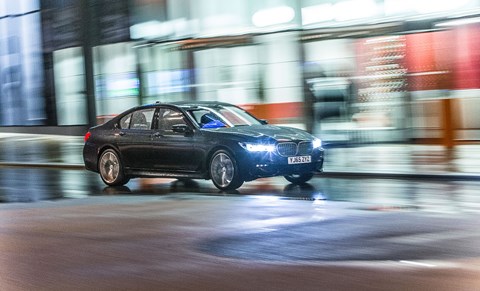
Almost inevitably, the BMW throws technology at the problem. It starts from a good place in this regard – iDrive is easier to navigate than Comand – and in the battle of the head-up displays, a 75% increase in surface area over the old model sees the 7-series take the lead. But this is nothing compared to the instant gratification of the Gesture Control. Casually twiddling a finger to change the volume is such a natural extension of the way you interact with a car that I catch myself trying it in the Mercedes and Porsche, while swatting the air to dismiss unwanted phone calls from the office is just so Minority Report. Love at first swipe, then. Or at least, it would be, if it worked a smidgen more consistently. Still a bargain at £160, and deliciously ironic that the new 7-series is also the first BMW with a touchscreen. Can’t see that getting much use.
There are more techno trinkets in the form of the Welcome Light Carpet (standard), which takes puddle lighting to the next level, and remote control parking (£1100, not fitted), while both BMW and Mercedes offer trick headlight arrays, fragrance diffusers, comprehensive climate control installations, and the extravagance of heated armrests and steering wheels. Spec the full complement of safety equipment and you may never leave your car again – they make walking look unacceptably dangerous.
As is probably already clear, the Porsche Panamera is out-classed in this arena. Great to drive, it lacks the techno drama and interior indulgence necessary to compete here; that replacement can’t come soon enough. But has the 7-series stolen the S-class’s crown? In truth, so different are their approaches that it’s tough to call. The Mercedes is about absolute luxury and, two years on, that interior still boasts an immense sense of occasion (at least until the new E-class arrives and steals its thunder). The BMW combines a very accomplished chassis with tech that feels a step beyond if not entirely essential. In the end it’s about personal preference, and for me that means the more reserved, more adaptable 730d. Now to recharge the key.
Asleep in the back: a happy-ish passenger speaks: by Anthony ffrench-Constant
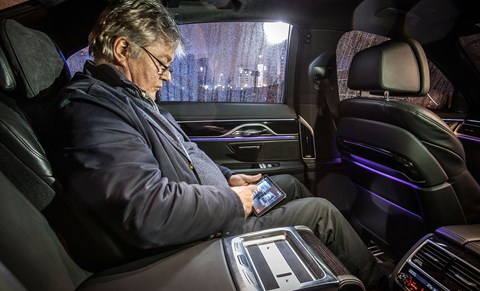
BMW 7-series
Accepting that this 7-series lacks both the long-wheelbase and televisual delights of the S-Class, the BMW gives the Mercedes a good run for the latter’s considerable money. The seat is very nearly as comfortable, as is the ride quality in ‘Comfort’ mode, and the view out is a little less restricted. Top trump is the tablet mounted in the centre armrest, offering control of climate, seat (including heated armrests), multimedia, sun blinds, ambient lighting, air-con ionisation and fragrances, and the wealth of apps available on any such device. Shame there’s no audio fine-tuning control, though.
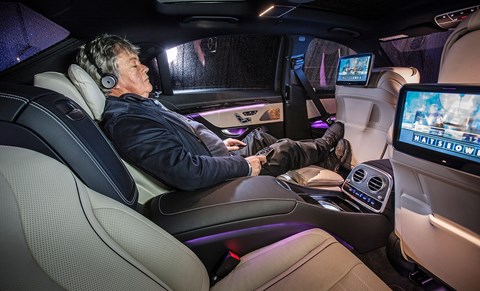
Mercedes-Benz S-class
Boasting £15,610 of optional extras and abetted by a sublime ride, this runs Kate Beckinsale a very close second as my rear of the year. Highlights include weapons-grade headrest comfort, front passenger seat control, armrest heating, excellent wireless headphones, and fiddly fold-out tables with enough spring in the mounting to pass muster as a mini trebuchet.
A Mercedes man told me why additional seat controls were on the rear phone rather than with all else on the remote. ‘Because the seat reclines so far you might not be able to reach the latter’, he said. Of course. Silly me.
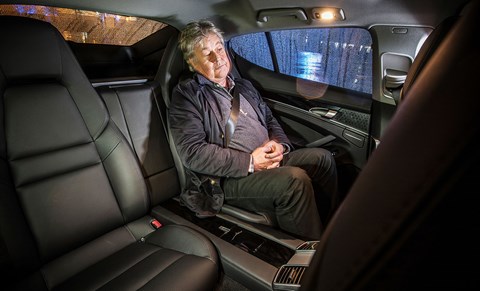
Porsche Panamera
Just how different a proposition the Panamera is to the S-Class and 7-series is all too evident the instant you plant your posterior astern. In fairness, both electrically adjustable seats and a twin-screen entertainment system with wireless headphones are available for the Porsche’s hind quarters. Their absence, however, affords eons to ponder a seat base so steeply raked to lower the hip point in the interests of headroom that, allied to a sheer seatback, comfort proves elusive. Firming up the dampers works wonders for smoothing the ride quality from a rear seat perspective.
Results
1st: BMW 7-Series – Elegant, understated, smart and supremely capable on the road, the new 7-series fuses Apple-esque tech innovation with traditional BMW driver appeal. And wins
2nd: Mercedes-Benz S-class – Handsome on the outside, almost embarrassingly luxurious within and almost as good to drive as to ride in the back of, the S is king for out-and-out luxury
3rd: Porsche Panamera – Long of tooth and broad of beam perhaps, but still the Panamera wows with its ability to make a two-tonne four-seater drive like a sports car. No limo, but then that’s not what you’re after, is it?
